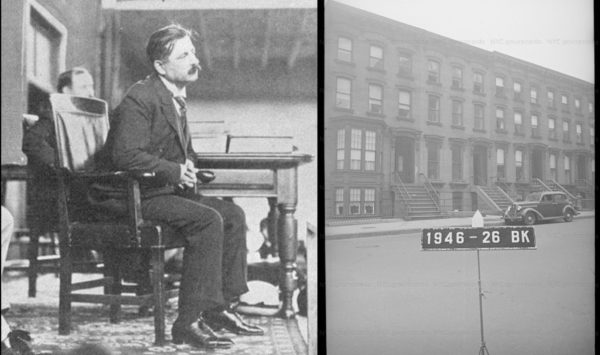THE “IMPOSING” VIEW FROM OCEAN HILL (1848)
******************************************************************************************************************************** Brownstone Detectives investigates the history of our clients’ homes. The story you are about to read was composed from research conducted in the course of one of those investigations. Do you know the history of YOUR house? ******************************************************************************************************************************** Before there was Ocean Hill—the Bedford-Stuyvesant neighborhood—there was Ocean Hill—the section of Green-Wood Cemetery. Whether one influenced the other is lost to the ages. What is clear, however, is that both locations got their names from a geographical point from which a body of water could clearly be viewed. “At this point, now known as Ocean Hill,” described a contributor (whose pen-name, revealingly, was Investment) in an edition of the Brooklyn Daily Eagle published just a few years before the Civil War began, “we have reached the highest point on the avenue (Fulton Street) and the most commanding elevation of ground in the city; and which, for grandeur, beauty and variety of its scenery, cannot be surpassed. “The ocean view,” Investment continued, “is especially grand and imposing.” Investment, whose contribution to the paper existed as a thinly veiled promotional piece for Brooklyn, was describing the “advance in the value of Brooklyn real estate.” From Fulton Ferry he advanced down Fulton Avenue to “gather such information as will enable the public to form an intelligent estimate as to the present and prospective value of property on and near this great thoroughfare.” “At this point Fulton avenue is distant but a few hundred feet from Atlantic avenue on the south, and Broadway on […]
THE BABY FARM OF UTICA AVENUE (1890)
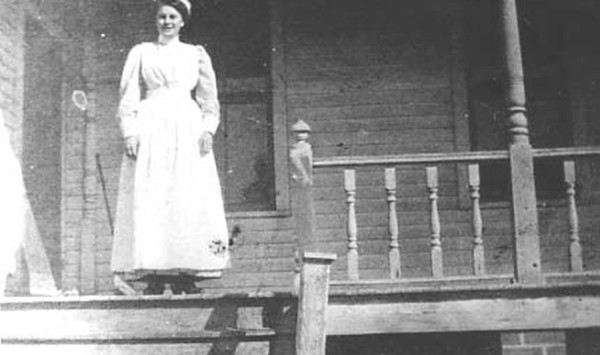
******************************************************************************************************************************** Brownstone Detectives investigates the history of our clients’ homes. The story you are about to read was composed from research conducted in the course of one of those investigations. Do you know the history of YOUR house? ******************************************************************************************************************************** The red flags began to go up slowly – one by one – as babies began to die. After Annie Smith, 1 month and 14 days old, it was wee Cora Tanner, just 7 days old. With two infant deaths being reported within the same month from a private residence at 126 Utica Avenue, Inspector Corcoran of the Department of Health was detailed to look into the matter. THE INSPECTION Arriving at 126 Utica Avenue, Inspector Corcoran discovered a “two story frame structure in which are available for maternity and nursery purposes four small rooms and an attic apartment.” Tending this facility, according to the Brooklyn Standard Union, was a Mrs. Emily V. Wilson, her daughter, and a nurse. Onsite, though, was also one baby and five women “patients.” Corcoran asked Mrs. Wilson to show her license, upon which request “she produced two documents given her by the Department of Health.” The first, dated 12 September 1886, granted permission to board four children at 100 Utica avenue, while the other bearing the date of 18 June 1888, permitted her to keep six children at 795 Herkimer street. She had no license for 126 Utica Avenue. At this point the inspector asked to view the house’s register, “which the law requires of […]
THE SKY BLUE CEILINGS OF 121 HENRY ST (1889)
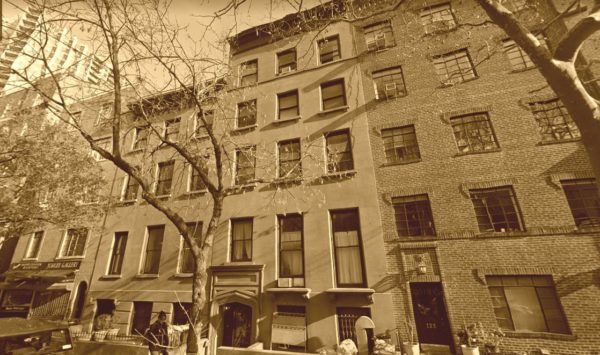
******************************************************************************************************************************** Brownstone Detectives investigates the history of our clients’ homes. The story you are about to read was composed from research conducted in the course of one of those investigations. Do you know the history of YOUR house? ******************************************************************************************************************************** In the late 1880s, the Brooklyn Daily Eagle started a series of articles which described – in great length and detail – the interiors of individual newly-built or renovated houses. These houses were usually brownstones belonging to those affluent or upper-middle-class members of society. Not only did such articles describing the interiors of neighbors’ homes sell newspapers, but the articles also served as advertising directed at those in the market for a townhouse to have a home of their own. These advertisement-articles were placed, likely at the expense of the designers responsible for the “interior decorations” being described, as each piece often ended with what readers wanted to know. “Who did the work?” WORK IS BY JOHANSMEYER & KOENKE, NEW YORK The “three story brown stone residence,” at “121 Henry street, near Clark,” was owned by Henry L. Meyer, who – at the time – was a hotel keeper, but who would rise to the position of treasurer of the Consumers Brewing Company. Meyer lived in the house with his wife and two daughters. In 1889, Meyer, who had recently acquired the (what until then had been used as a) rooming house, embarked upon a whole-house renovation, employing the New York City designers Johansmeyer & Koenke. Theodore C. Johanesmeyer and Bernhard […]
THE SEVEN SISTERS OF LINCOLN PLACE (1906)
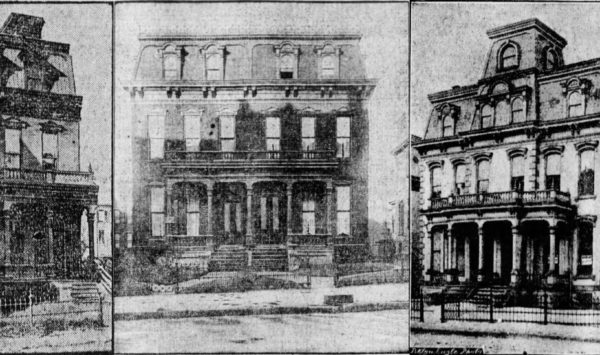
******************************************************************************************************************************** Brownstone Detectives investigates the history of our clients’ homes. The story you are about to read was composed from research conducted in the course of one of those investigations. Do you know the history of YOUR house? ******************************************************************************************************************************** If the Big Bad Wolf had had anything to do with it, he would have always voted for the predictability of a good detached wood-frame villa. It had gotten him far in his day and, what’s more, it had gotten him fed. But it wasn’t the Three Little Pigs’ hairy nemesis that was making housing decisions in Park Slope, Brooklyn around the turn of the last century. Rather, it was the Pigs, themselves, who wanted more modern, sturdier, up-to-date brick and masonry structures. THE DEATH OF VILLAS In early 20th century Brooklyn, a combination of home buyers’ indicators was guiding downward the valuation of older Victorian-era properties. First of all, impacting the long-term downward trajectory, there were the laws promoting fire zones that prevented structures built with wood frames from being constructed going forward. There was also their susceptibility to fire (which prompted these fire zones in the first place). And there was their age – a large number of free-standing villas still around in Brooklyn at the time were at least 25 years old – most others were many years older that that. Most visible, however, were the tastes of the early 20th century home buyers which leaned heavily in the direction of sturdy masonry buildings. The variable, however, which […]
A “9-YEAR-OLD HABITUAL DRUNKARD” (1900)
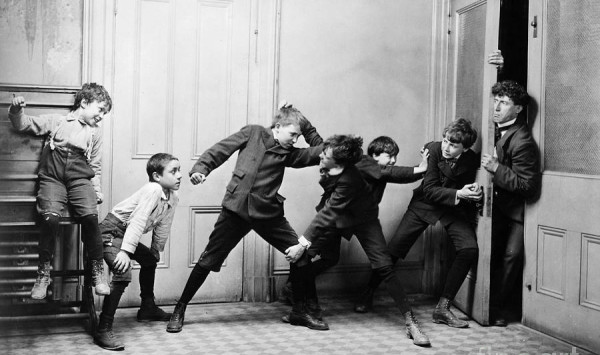
******************************************************************************************************************************** Brownstone Detectives investigates the history of our clients’ homes. The story you are about to read was composed from research conducted in the course of one of those investigations. Do you know the history of YOUR house? ******************************************************************************************************************************** A few years ago today, the internet was abuzz with the story of a 9-year-old boy who drank, smoke pot, and was abusive to everyone. Maybe scandalous in today’s world, but back in the 19th century it was apparently a more common occurrence. In a world where 9-year-olds were habitually asked to run down to the corner bar and get their father’s (or mother’s) beer pail or growler filled, such boys were plentiful. BOARDING BOYS Children were also less protected, as we all know, back in the day. They were frequently even boarded with other families in the neighborhood, or shipped off to those who advertised their services in the newspapers. These latter were usually those who were house- or room-rich (had enough extra room for children wherever they lived), but didn’t necessarily have the income needed for getting by. Boarding children was just another way of making ends meet. “BOARD – TWO OR THREE CHILDREN wanted to board; will be instructed. Apply at 98 Troutman st.,” read one ad, for instance, appearing in the Daily Brooklyn Eagle in 1885. But it was not always those seeking boarders who had the bad children who drank, smoke, and cursed. At the very same address listed in the ad above, 98 Troutman Street, […]
THE JAPANESE GILT OF 150 HANCOCK ST (1887)
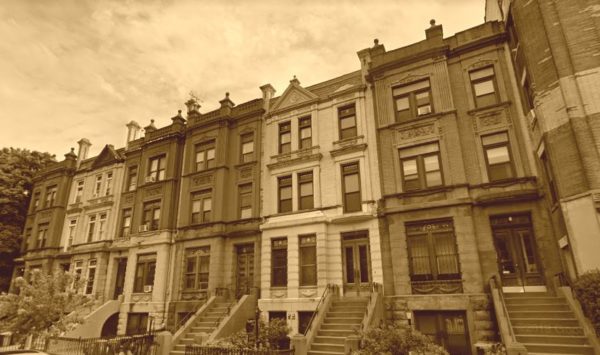
******************************************************************************************************************************** Brownstone Detectives investigates the history of our clients’ homes. The story you are about to read was composed from research conducted in the course of one of those investigations. Do you know the history of YOUR house? ******************************************************************************************************************************** Much of the design selections made by designers in the last part of the 19th century are comprised of a coterie of materials, patterns, and tools either no longer available today or much changed in their appearance. Although most builders used simple materials that did not require the knowledge or training of a master designer, some of the more high-end brownstone constructors utilized the services of those who would tailor their interiors toward the more affluent members of society. In the late 1880s, the Brooklyn Daily Eagle started a series of articles which described – in great length and detail – the interiors of individual newly-built or renovated houses. These houses were usually brownstones belonging to those affluent or upper-middle-class members of society. Not only did such articles describing the interiors of neighbors’ homes sell newspapers, but the articles also served as advertising directed at those in the market for a townhouse to have a home of their own. These advertisement-articles were placed, likely at the expense of the designers responsible for the “interior decorations” being described, as each piece ended with what readers wanted to know. “Who did the work?” THE WORK WAS DONE BY HALBERT In 1886, a row of Queen Anne style 3-story and basement “brown stone houses” […]
SHAKESPEARE AT NO. 24 BREVOORT PL (1928)
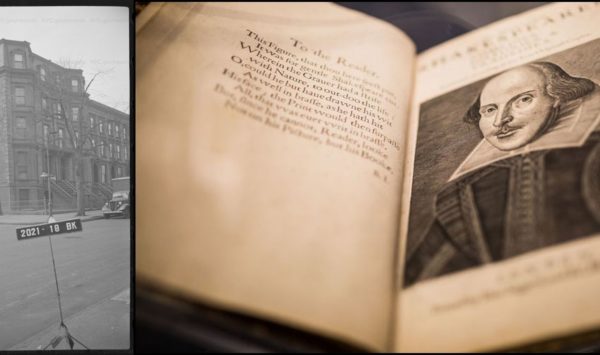
******************************************************************************************************************************** Brownstone Detectives investigates the history of its clients’ homes. The story you are about to read was composed from research conducted in the course of one of those investigations. ******************************************************************************************************************************** Henry C. Folger loved Shakespeare. His admiration for the author and his writings was such that he once paid $100K for a single folio of the bard’s work. The president of the Standard Oil Company was so smitten with Shakespeare’s works that, in 2014, a book, Collecting Shakespeare, was published about Folger and his collection. Folger, who started his relationship with Standard Oil as its director, would rise to become the chairman of its board, building a trusted relationship with the company’s owner, John D. Rockefeller, Sr. While frugal in the management of his money, Folger’s position with the largest oil company in the world certainly allowed him plenty of it to use in the pursuit of everything Shakespeare. And everything Shakespeare that he purchased for his collection eventually made its way to the library of their rented house at No. 24 Brevoort Place in Brooklyn, where the couple would live from 1910 through the early 1930s. FOLGER, BREVOORT, & SHAKESPEARE Henry Clay Folger’s collection of Shakespeareana included 35 copies of the 1623 first folio edition, of which only 200 copies were then known to be in existence. These earliest texts of William Shakespeare’s works were published during the 16th and 17th centuries in quarto or folio format. While quartos are smaller volumes, folios are large, tall volumes, roughly […]
“IT BURNED WELL” (1885)
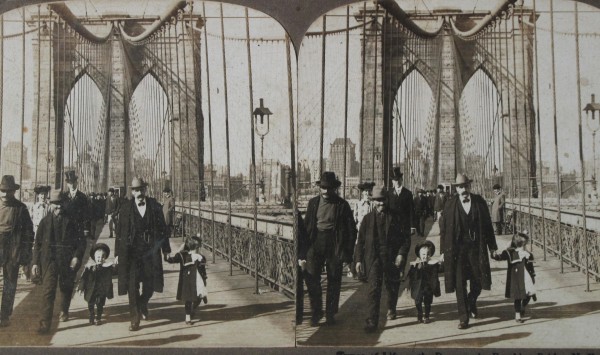
******************************************************************************************************************************** Brownstone Detectives investigates the history of our clients’ homes. The story you are about to read was composed from research conducted in the course of one of those investigations. Do you know the history of YOUR house? ******************************************************************************************************************************** Have you ever left something aboard a subway car and wondered what happened to it? The Metro Transit Authority has an entire “Lost & Found” room devoted to articles that were forgotten on their property. In it, they hold items discovered (or turned in) on their trains and buses for “three months to a maximum of three years, depending on the estimated value of the item.” If your item is not retrieved within this period of time, it is either auctioned or, if it is in poor condition, sent for disposal. Back in the late 19th century it appears that disposal was the only method employed. FOUND ON THE BRIDGE Well, apparently, the Brooklyn Bridge being so new in 1885, having so recently opened, and being so popular with the public, the accumulation of so many disparate articles on the “cars” was likely a phenomenon that had not presented itself before. As such, there was no program designed to locate the owners of the materiel left on trains and street-cars. It was simply summarily destroyed. According to a reporter for the Brooklyn Daily Eagle that year, a “great assortment of odds and ends which have been picked up on the bridge cars and promenade during the past year were cremated in […]
THE RETURN SLAVE TRADE IN DUMBO (1889)
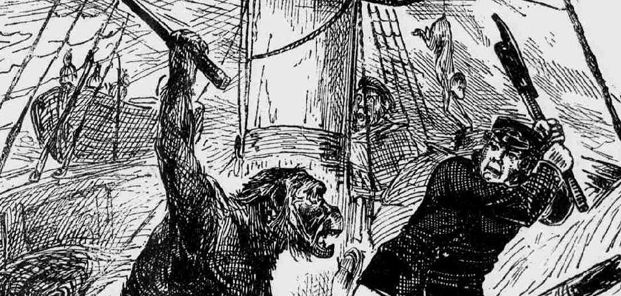
Back in the 19th century, newspapers knew how to tell a good yarn. And who better to get their material from than sailors who were known for spinning a few of their own. So, in 1889, when reporters heard a rumor about a ship filled with escaped snakes and monkeys, many of the former making meals of many of the latter, they raced down to the shipyards to see what stories they could find. THE CLIPPER SHIP MONROVIA AT THE EMPIRE STORES Docked down at the Empire Stores, a chain of huge coffee warehouses strategically built near the Fulton shipyard docks – in what is today known as DUMBO – was a relatively new, 3-masted clipper bark, the Monrovia. The Monrovia’s original purpose was the Liberian trade, but as all shipping companies had to make up for costs in any way they could, they usually took on a trade in passengers. The clippers’s trade route was New York to Liberia, though, so there were few passenger sources other than missionaries – until they learned of the groups hoping to repatriate former slaves. In this case, at the request of the American Colonization Society, the Monrovia had been transferring black emigrants, many of them former slaves, back to their African homeland. OUT OF AFRICA On the date of her return to New York, the Monrovia was transporting in her holds palm oil, ginger, palm nuts, cattle hides, canewood, and coffee, the last of which, in particular, caused her to dock at […]
